What is Risk in Project Management?
Published:
Updated:
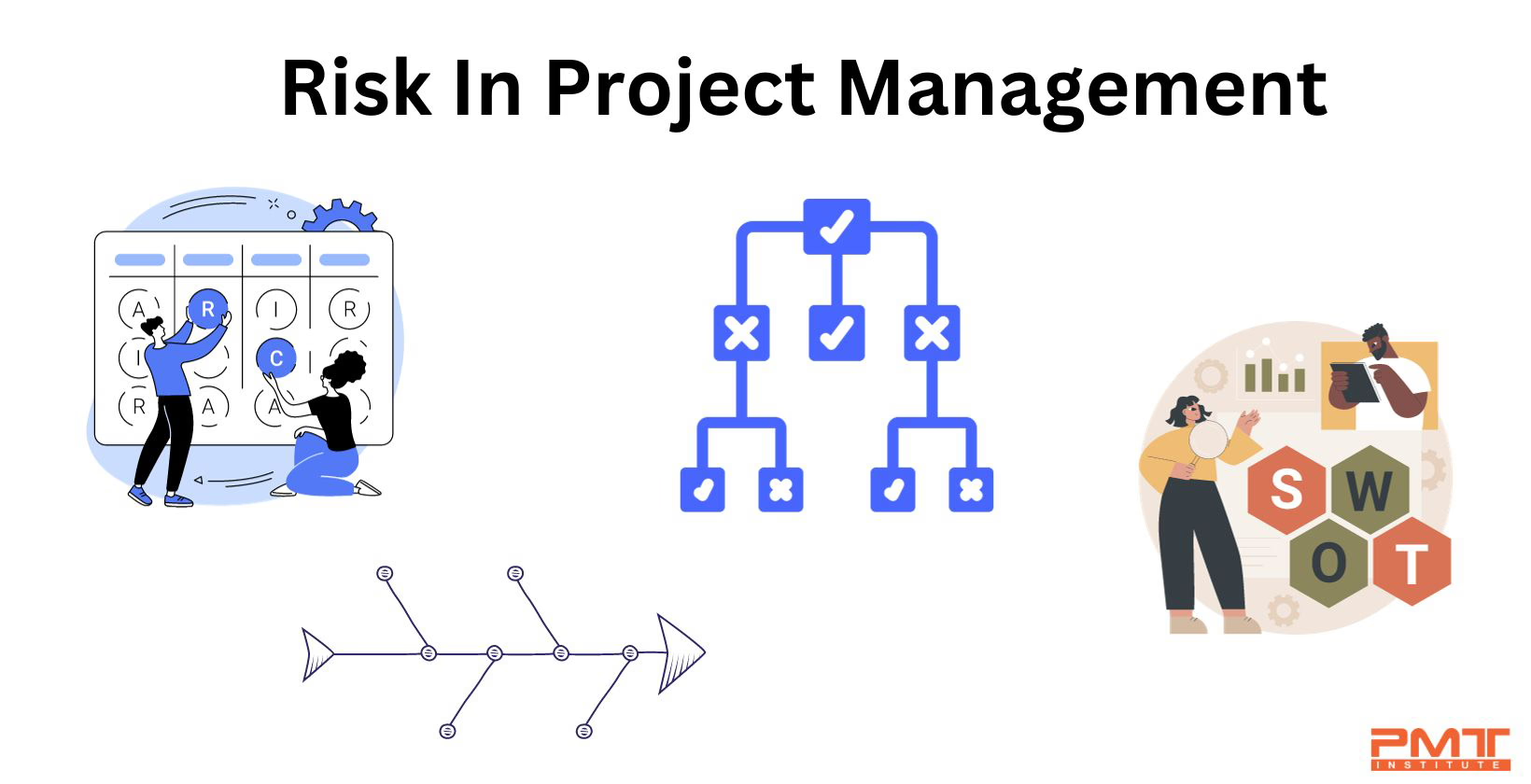
Navigating the complexities of risk in project management is paramount for success. Explore what a risk is, the types of risk, and an list of tools and techniques for effective risk management in this comprehensive guide.
Risk is an omnipresent factor in project management that can significantly influence the success or failure of a project. Risk represents uncertainty and the potential for adverse events that could impact project objectives. Effective risk management is a critical aspect of project planning and execution, enabling project managers to identify, analyze, and mitigate potential risks proactively.
Key Takeaways:
- Understanding Risk: Both negative and positive factors can influence project objectives.
- Importance of Risk Management: Proactive management enhances success and stakeholder confidence.
- Types of Risks: Known, unknown, pure, and business risks require tailored approaches.
- Risk Management Process: Identification, analysis, response planning, and continuous monitoring are essential.
- Tools and Techniques: Utilize tools like risk registers and techniques such as Monte Carlo Simulation for comprehensive management.
In this detailed article, we will delve into the intricacies of risk in project management, offering valuable insights and a comprehensive resource for project managers seeking to navigate the complex landscape of risk and enhance project outcomes.
Definition of Risk in Project Management
According to the Project Management Body of Knowledge (PMBOK®) Guide from the Project Management Institute, "risk" is defined as "an uncertain event or condition that, if it occurs, has a positive or negative effect on a project's objectives."
It's worth noting here that while most people may think of risks solely as being negative in nature, the term "risk" as defined by PMI could also be used to describe a positive effect on a project's final outcome.
These two different types of risks, positive risks, and negative risks, are often referred to as "opportunities" and "threats," respectively.
Risk involves uncertainty, and effective risk management seeks to minimize the negative impact of threats and maximize the potential benefits of opportunities.
Importance of Risk Management in Project Management
Effective risk management is a fundamental component of project management, and its significance cannot be overstated. It plays a crucial role in:
a. Enhancing Project Success: By proactively identifying and mitigating risks, project managers increase the likelihood of project success and achieving project objectives.
b. Minimizing Cost Overruns and Delays: Addressing potential risks before they materialize helps prevent cost overruns, delays, and other setbacks that can derail the project.
c. Fostering Stakeholder Confidence: Stakeholders appreciate a well-prepared project team that considers potential risks and has contingency plans in place.
d. Improving Decision-Making: Effective risk management provides valuable insights and data to inform project decisions and priorities.
Types of Risks in Project Management
a. Known Risks: Risks that have been identified and analyzed based on historical data, experience, and lessons learned from previous projects fall under this category. Known risks are generally easier to manage and plan for since the project team is aware of their existence and potential impact.
b. Unknown Risks: Unknown risks, also known as "unknown unknowns," are events or conditions that are difficult to foresee or anticipate. These risks can be more challenging to manage since they may surface unexpectedly during the course of the project.
c. Pure Risks: Pure risks are those with only negative consequences, representing potential threats to the project's success. These risks are typically associated with factors such as market changes, technological disruptions, and natural disasters.
d. Business Risks: Business risks carry both positive and negative outcomes. These risks present opportunities for project improvement or advancement, such as adopting innovative technologies or exploring new markets.
Risk Management Process in Project Management
Risk Identification
Project managers and teams engage in risk identification activities, such as brainstorming sessions, checklists, historical data analysis, and expert judgment, to identify potential risks that may impact the project. The following can be used for risk identification:
Fishbone Technique
The fishbone method initiates by pinpointing significant project implications and subsequently traces back to uncover potential root causes branching out on either side. The outcome is a diagram resembling a fishbone structure.
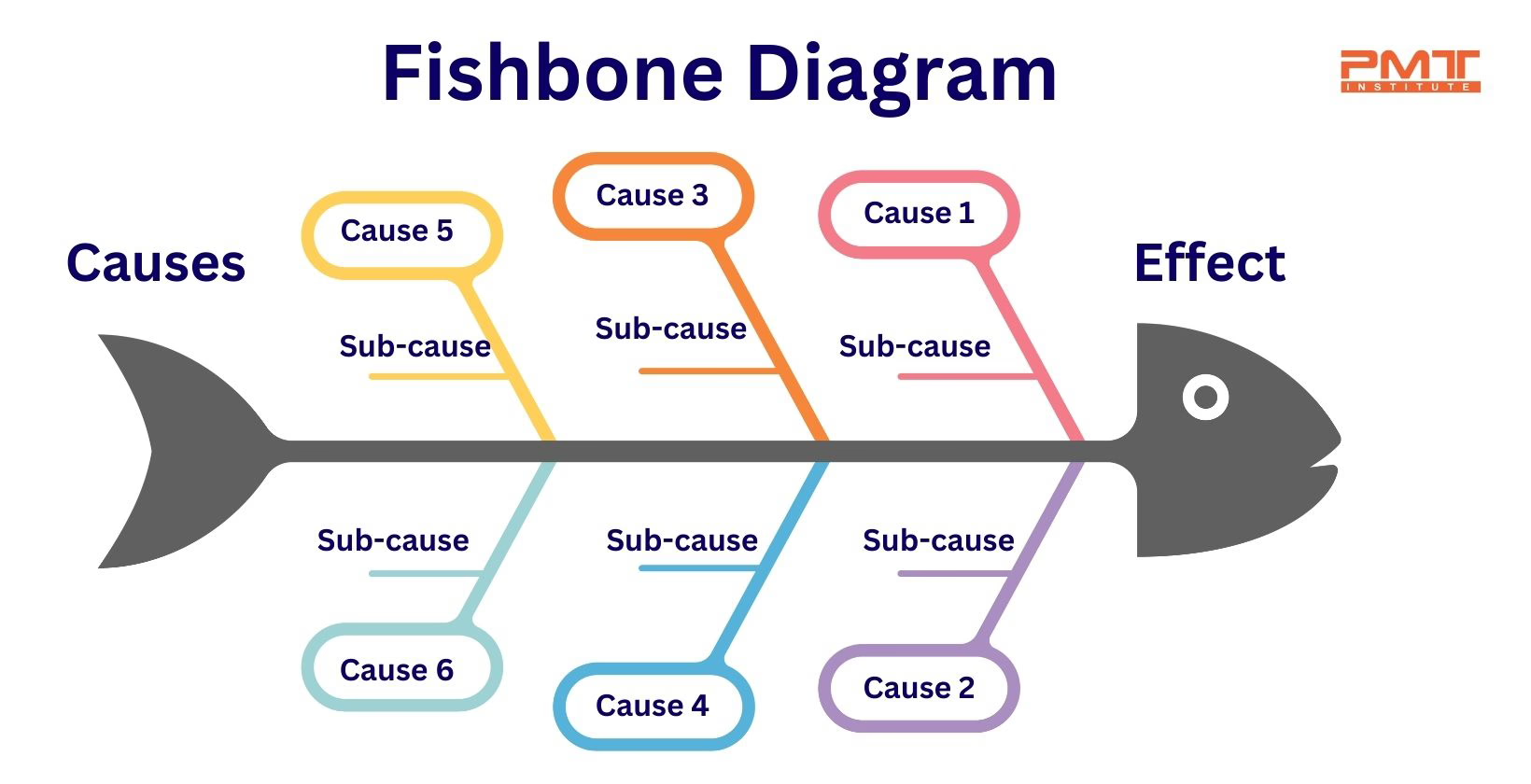
Survey
A thorough survey involving stakeholders is a prime avenue for unearthing nuanced risks that might have eluded initial consideration.
Visual Representation
Utilizing visual tools like flow charts and cause-and-effect diagrams can provide a tangible representation of how a risk might impact the project.
Risk Analysis
Once risks are identified, they undergo a comprehensive analysis to assess their potential impact and likelihood of occurrence. Qualitative and quantitative techniques are employed to prioritize risks and determine their severity. Following tools/ approaches can be used:
Red/Amber/Green (RAG) Scale
The classic approach to ranking risks, the RAG diagram provides a straightforward method to classify project-related threats based on readily comprehensible terms.
Risk Immediacy
Incorporating time considerations into risk prioritization facilitates the allocation of resources towards addressing the most imminent threats, while allowing strategic planning for forthcoming challenges.
Risk Categorization
Grouping risks according to their distinct types enables the formulation of coordinated strategies for mitigating damage, enhancing the efficacy of measures against multiple risks.
Decision Tree
A decision tree serves as a valuable visual tool portraying potential consequences of project risks, accompanied by a numeric depiction of how each decision influences project success.
Failure Mode Effects Analysis (FMEA)
The objective of FMEA is to pinpoint instances of complete failure. It directs resource allocation towards addressing pivotal issues.
Sensitivity Analysis
This approach entails crafting two models: one depicting the project without the risk and another with the risk's presence. It aids in highlighting the gravity of the situation in the event of a risk or opportunity materializing.
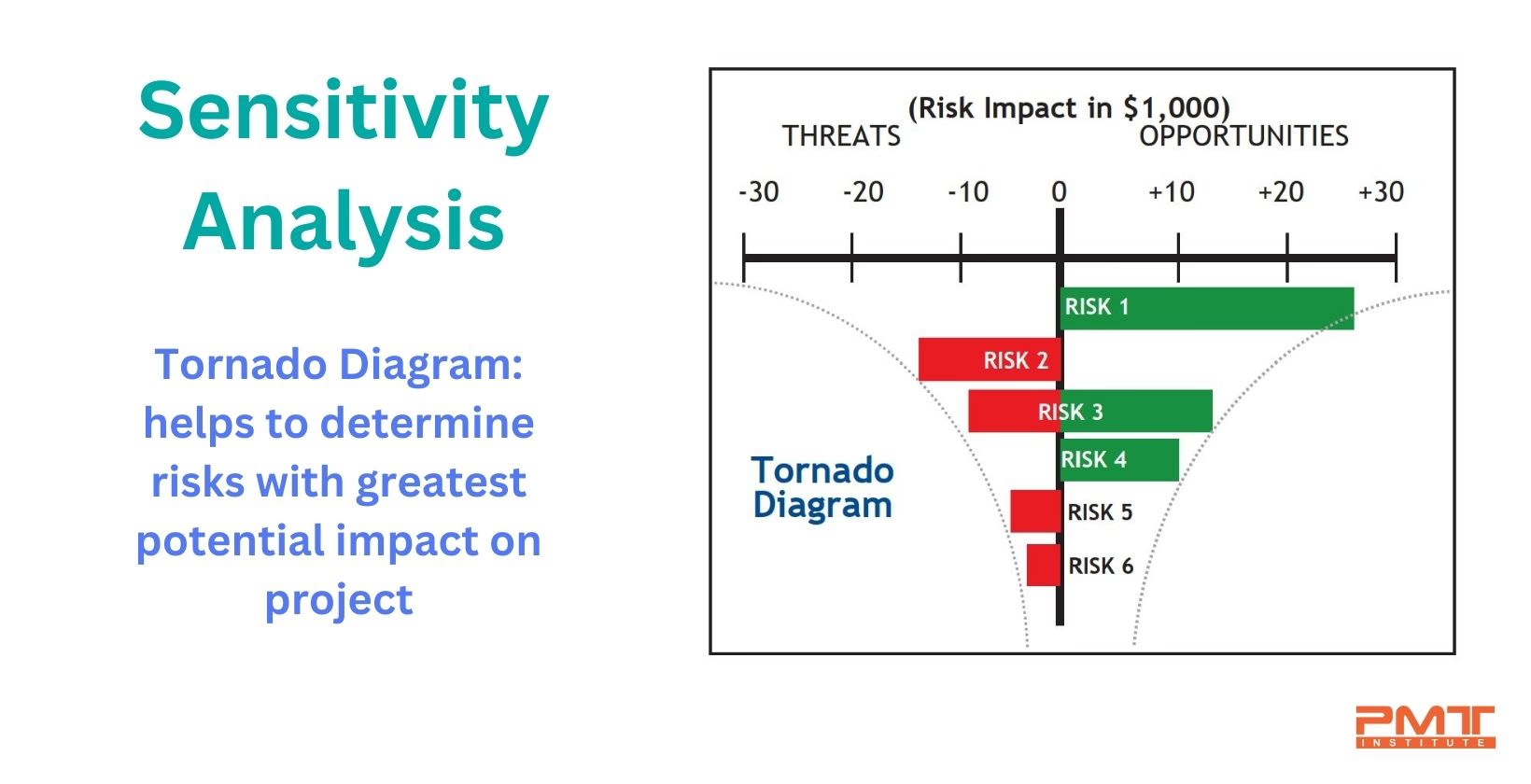
Risk Response Planning
Based on the risk analysis, project teams develop risk response plans. These plans outline strategies to mitigate threats, exploit opportunities, accept certain risks, or transfer risks to external parties through insurance or contracts.
Threat Responses
Avoidance - Revise the project plan to eliminate the risk's occurrence entirely.
Mitigation - Adjust the project plan to minimize potential harm or negative effects.
Transfer - Modify the project plan to shift responsibility for the impacts to another entity.
Acceptance - Maintain the project plan unchanged when the adverse consequences are minor or unlikely.
Opportunity Responses
Exploitation - Adapt the project plan to harness the advantages of a favorable risk.
Enhancement - Modify the project plan to enhance the achievement of a specific objective.
Sharing - Adjust the project plan to involve an external party, amplifying the attainment of an objective.
Acceptance - Retain the project plan without alteration when the positive outcomes are insignificant or improbable.
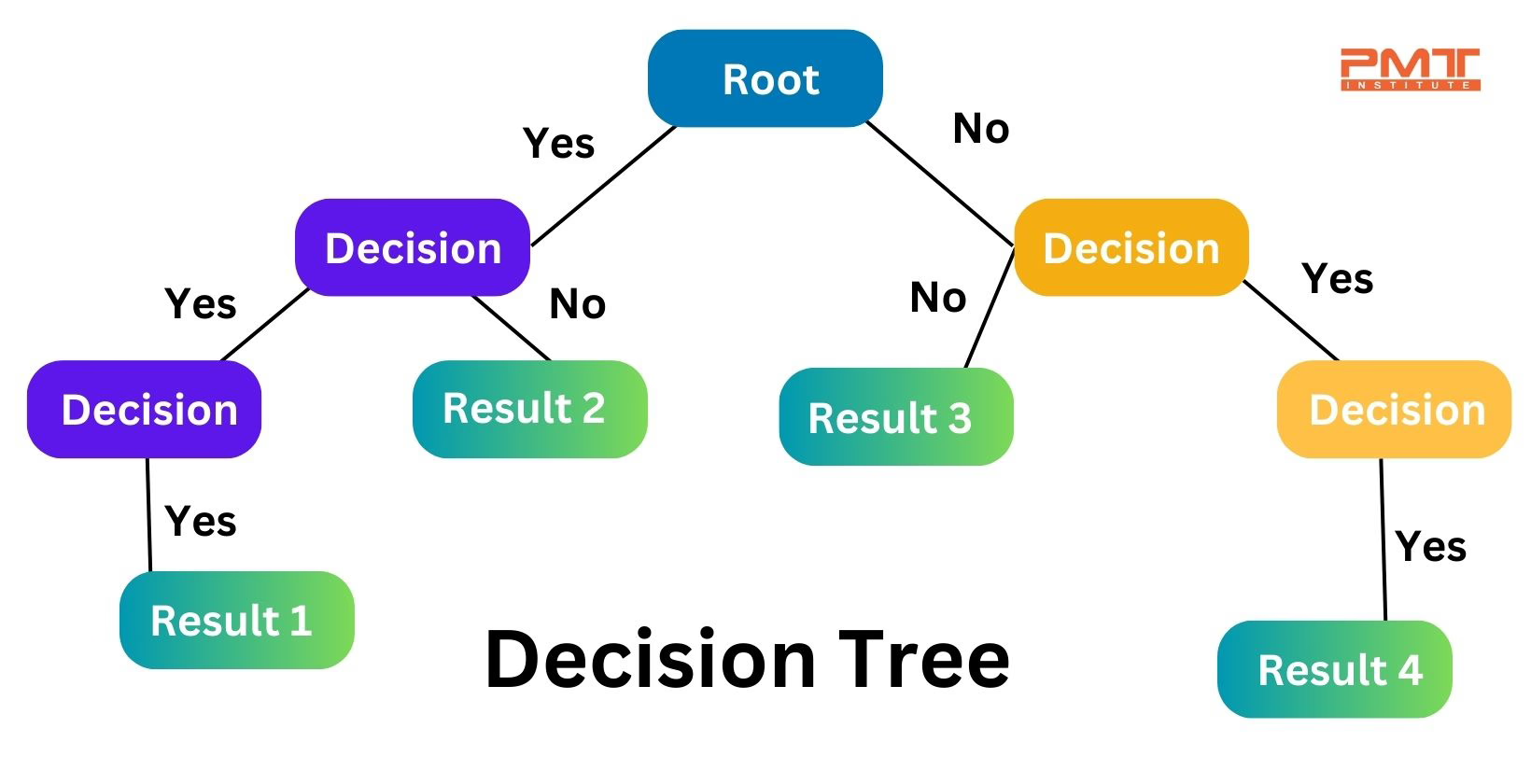
Risk Monitoring and Control
Throughout the project lifecycle, project managers continuously monitor identified risks and their corresponding response plans. Adjustments are made as necessary to address emerging risks or changes in project conditions. Following can be used:
Progress Updates
Regular status reports are essential to prevent the project from inadvertently reaching a risk trigger point, allowing timely measures to address risks as needed.
Risk Evaluation
Monitoring the efficiency of risk responses aids in refining risk strategies over time, and also provides insights into risks encountered that can inform future projects of a similar nature.
Tools and Techniques for Risk Management
The effective management of risks is vital for project success. As risks can be uncertain and unpredictable, project managers rely on various tools and techniques to identify, analyze, and mitigate potential risks proactively.
These tools and techniques provide a structured approach to handling risks, ensuring that project teams are well-equipped to respond to challenges and opportunities in a methodical and informed manner. Let's explore some of the key tools and techniques utilized in risk management to create a robust risk management strategy.
Risk Register
The risk register serves as a central repository for all identified risks throughout the project lifecycle. It is a comprehensive document that contains essential information about each risk, such as its description, potential impact, probability of occurrence, risk category, and planned risk responses. The risk register enables project teams to keep track of all identified risks, understand their characteristics, and assess their severity in relation to project objectives. By maintaining a well-organized risk register, project managers ensure that no potential risk is overlooked and that all risks are appropriately addressed in a timely manner.
Risk Probability and Impact Matrix
The risk probability and impact matrix is a valuable tool that aids project teams in prioritizing risks based on their likelihood of occurrence and potential impact on project objectives. The matrix typically categorizes risks into high, medium, or low probability and impact zones.
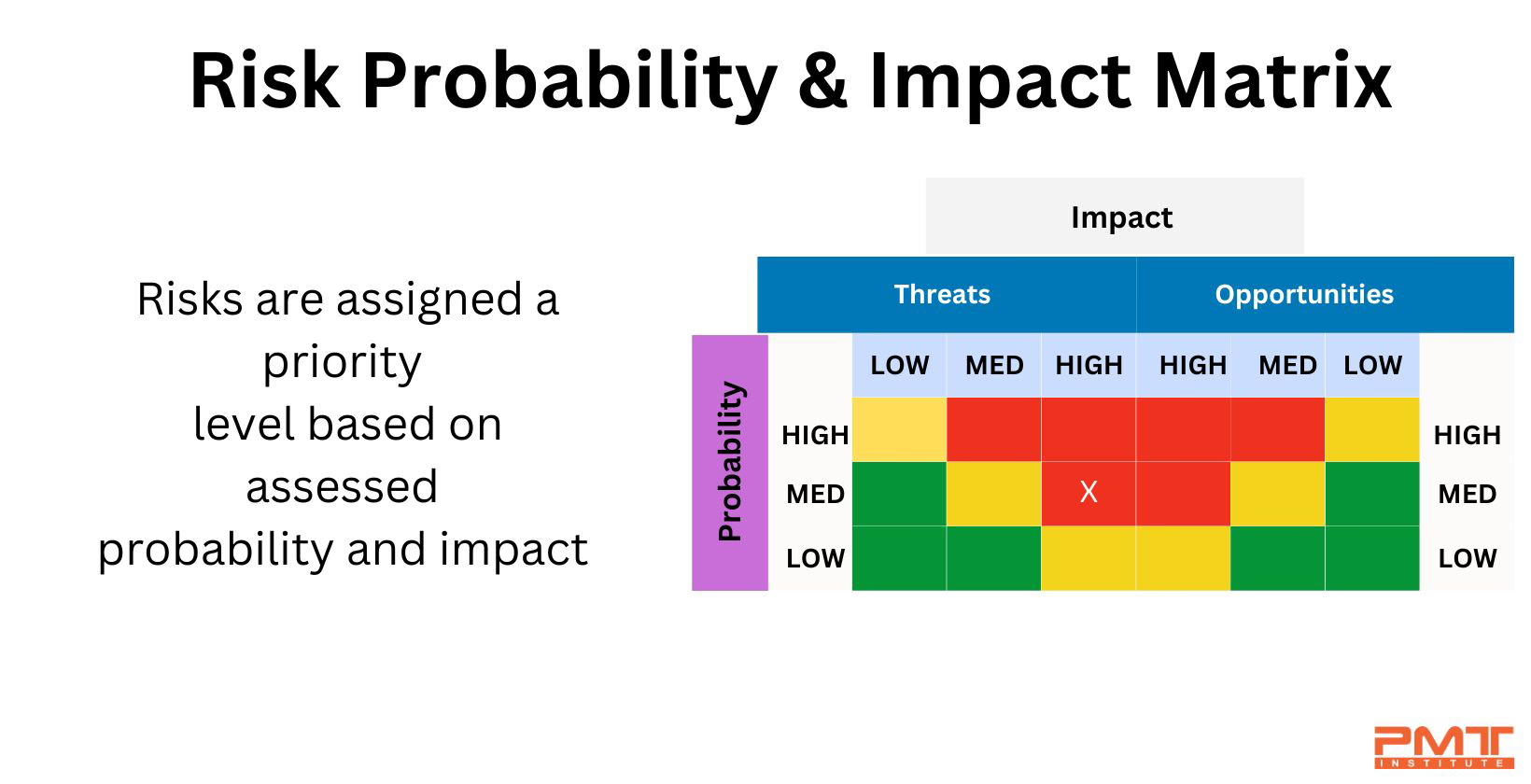
By plotting risks on the matrix, project teams gain insights into which risks require immediate attention and which ones may have a lesser impact on the project. This prioritization helps project managers allocate resources and focus efforts on managing high-priority risks, allowing them to make informed decisions on risk response planning.
Monte Carlo Simulation
Monte Carlo Simulation is a powerful statistical technique used to model project uncertainties and assess potential project outcomes. It involves running multiple iterations of the project schedule, considering different combinations of risk events and their probabilities. Each iteration produces a range of possible project outcomes, providing the project team with a probabilistic view of project performance.
Monte Carlo Simulation aids in understanding the range of potential project completion dates and budget outcomes, enabling project managers to make risk-informed decisions and establish realistic project expectations.
SWOT Analysis
SWOT (Strengths, Weaknesses, Opportunities, Threats) analysis is a technique widely used to identify and evaluate internal and external factors that may influence project success. By examining the project's strengths and weaknesses, project teams can capitalize on favorable factors and address areas that need improvement.
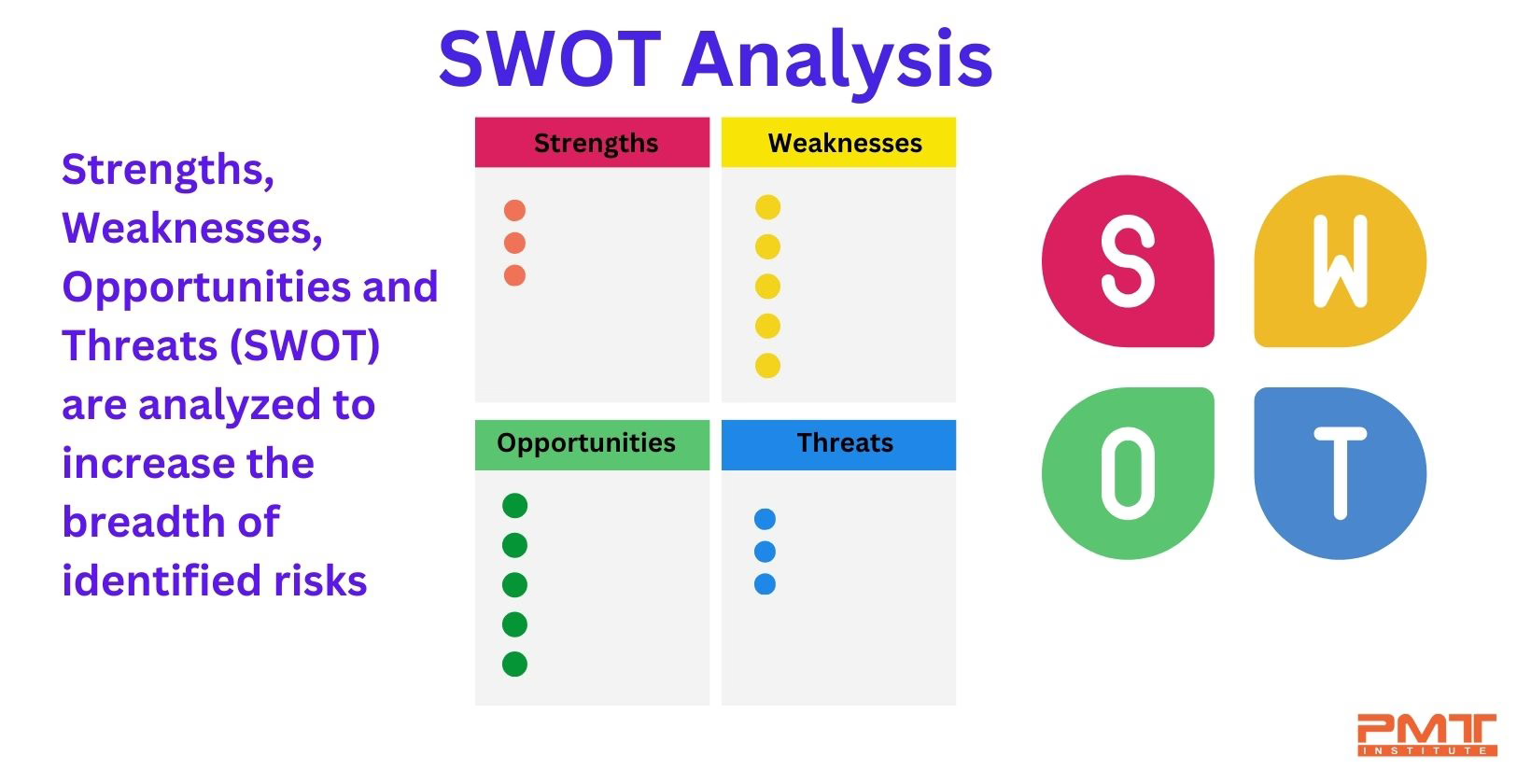
Additionally, SWOT analysis helps identify potential opportunities and threats that could impact the project positively or negatively. Project managers can leverage this information to create risk response strategies that align with the project's strengths and opportunities, while effectively addressing weaknesses and mitigating threats.
Delphi Technique
The Delphi Technique is a structured method for gathering expert opinions on project risks and their potential impacts. It involves anonymous surveys or questionnaires sent to a panel of subject matter experts who provide their insights and judgments on identified risks. Through multiple iterations, the experts reach a consensus on the probability and impact of each risk. The Delphi Technique is valuable when dealing with complex and uncertain risks, as it harnesses the collective expertise of professionals to arrive at a well-informed risk assessment.
Decision Trees
Decision trees are graphical representations used to evaluate various decision options and their potential outcomes. They are particularly useful for analyzing decisions in situations where multiple paths and uncertainties are involved. Project teams can use decision trees to assess the consequences of different risk responses and identify the most favorable course of action. By visualizing the potential outcomes of each decision, decision trees facilitate clearer risk analysis and aid project managers in making optimal risk response decisions.
Reserve Analysis
Reserve analysis involves setting aside contingency reserves to address identified risks. These reserves serve as buffers for potential cost overruns or schedule delays resulting from risk events. There are two types of reserves:
a. Cost Contingency Reserves: Allocated to cover potential cost overruns resulting from risk events.
b. Schedule Contingency Reserves: Allocated to accommodate potential schedule delays caused by risk events.
Project managers determine the reserve amounts based on the identified risks, their potential impacts, and the organization's risk tolerance. Reserve analysis ensures that the project remains financially and temporally resilient to unforeseen circumstances, reducing the likelihood of project failure due to unforeseen risks.
Incorporating these tools and techniques into the risk management process equips project managers and teams to navigate uncertainties and complexities effectively. A comprehensive risk management strategy enhances project success rates, improves decision-making, and fosters stakeholder confidence.
Frequently Asked Questions (FAQs):
Question 1: What are the steps of the risk management process in project management?
Answer 1: The risk management process in project management typically involves steps such as risk identification, risk analysis, risk response planning, and risk monitoring and control.
Question 2: How do you identify risks in project management?
Answer 2: Risks in project management can be identified through techniques such as brainstorming sessions, checklists, historical data analysis, expert judgment, and stakeholder consultations.
Question 3: What are some effective risk management techniques for project managers?
Answer 3: Project managers can employ various risk management techniques such as qualitative and quantitative risk analysis, SWOT analysis, Delphi Technique, decision trees, and Monte Carlo Simulation to effectively manage project risks.
Conclusion
Risk is an inherent aspect of project management that demands careful attention and proactive planning. Effective risk management is essential for project success, as it enables project teams to anticipate potential challenges, seize opportunities, and make informed decisions throughout the project lifecycle. By fostering a risk-aware project culture, project managers can steer projects towards successful outcomes and great communication management in an ever-changing and unpredictable business environment. Understanding the nuances of risk in project management empowers project managers to navigate complexities, optimize resources, and deliver value to stakeholders, setting the stage for project success in diverse industries and project landscapes.


